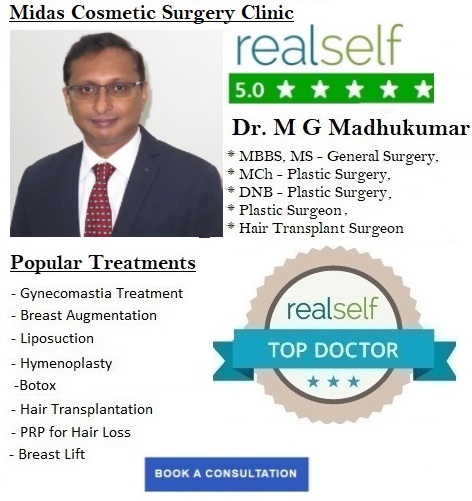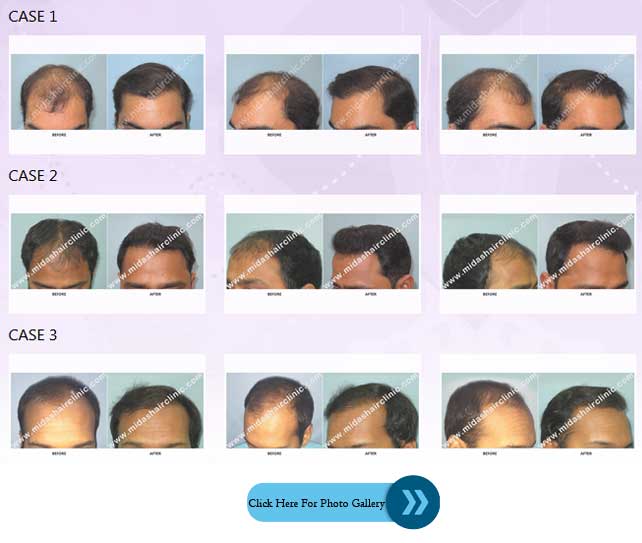Hair Transplant in Bangalore








PRINCIPLE
CANDIDATES FOR SURGERY:
- Men with male pattern baldness.
- Women with female pattern hair loss.
- People who want to restore or thicken moustache, beard, eyebrows and eyelashes.
- People who want to restore or advance their hairline.
- People with hair loss due to burn scars, injuries or skin diseases.
STRIP HARVEST TECHNIQUE
Hair transplant is considered to be ‘minor out-patient surgery’. It can take 4–8 hours and is usually performed using local anaesthesia on an out-patient basis. Patients are awake as usually no sedation is used.
Strip harvest technique has been the method of donor harvest for many years, and is still the best option in a majority of hair loss patients, especially with advanced thinning, looking for the maximum hair coverage at a lesser cost. Strip procedures are a team effort; the surgeon heads the team and an experienced, well trained, efficient and technically adept team is very important.
A narrow, long strip of skin is marked in the ‘safe’ donor area. The dimensions of the strip are calculated based on the follicular unit density and the number of grafts planned. Usually, a long and narrow strip is preferred as it causes minimal tension during closure and results in a better scar.
Using local anaesthesia, the strip is harvested from the donor area and closed with sutures or staples (removed in 10 days). Dissolvable sutures may occasionally be used in order to eliminate the need for you to return for stitch removal. Using ‘Trichophytic Closure’ technique, the scar will be better concealed, as some hair will grow through the scar. Dr. Madhukumar M.G uses Trichophytic closure technique in all his patients, with no additional cost. The hairs surrounding the scar will conceal it, as long as they are not too short.
The donor strip is then cut into small slices without injuring the hair follicles (Slivering). The follicular unit grafts (1-4hair) are isolated from the slivers and stored in chilled Ringer lactate solution. The entire process is performed under magnification to maximise the yield of grafts.
Dr. Madhukumar M.G follows the ‘Stick and place technique’ where he makes the recipient site hole and places the graft simultaneously. The recipient sites are made with 19G and 20G needles, depending on the size of the grafts. Care is taken to match the direction and angle of the graft insertion with that of the surrounding hair, which is very important to get a natural looking result. All through this you will not feel the pain of the needle pricks, as the area is numb due to local anaesthetic. Graft placement is a procedure that requires the surgical skill and aesthetically-trained eye and hand of the hair restoration specialist. During graft placement, one can listen to some light music or watch TV. Breaks are allowed during the surgery, for refreshments and visit to the rest room. At the end of the procedure, the donor site will have a small dressing and the transplanted area has no dressing.
Even large strip procedures with 2500 FU plus grafts, can be repeated if the donor area is suitable. One must allow the scalp to heal and gain tissue strength, so we advise a gap of 6-8 months before the next session is planned. In the subsequent procedure, the scar is always excised, so that only a single scar results in spite of multiple procedures.
SCALP EXERCISES
If the scalp is too tight, taking a normal size (width) strip may be impossible. In such cases, scalp exercises are recommended generally 4-8 weeks prior to the hair transplant. These exercises help in loosening the skin tightness and thus permitting strip harvest. The techniques of performing the scalp exercises are shown below. It is advisable to perform all exercises for 5 minutes in the morning and 5 minutes in the evening.
To stretch the skin at the back of the head, Clasp your hands and place them on the back of your scalp as shown in the photos below. Place your hands slightly above the bony ridge that runs horizontally at the back of your head. Pull your hands upwards moving your scalp skin up and hold it there till the count of ten. Press firmly against your head so that your scalp moves and your hands don't simply slip over your hair. Do the similar stretch by moving the scalp downwards and hold it there till the count of ten.
To stretch the skin at the sides of the head, Place your hands firmly at the side of your head, above the ears as shown in the photo below. Move the scalp inwards (to the centre) as far as possible and hold the position till the count of ten. Repeat the same stretch but move the scalp outwards and hold till the count of ten.
TRICHOPHYTIC CLOSURE
The main disadvantage of the strip harvest technique is the donor scar. Some patients like to wear their hair short without revealing any evidence of the surgical procedure. With the trichophytic closure technique, one of the wound edges (upper or lower) is trimmed, allowing the edges to overlap each other and allow the hair to grow directly through the donor scar. This can significantly improve the appearance of the donor area scar, in patients who wear their hair very short
AFTER CARE
- Go home on the same day with a small dressing in the donor area and a cap.
- Application of ice over forehead and massage with fingers to reduce swelling
- Avoid lying in face down position for 2-3 days
- Shampooing gently after 48 hours
- Wear a loose cap to cover the grafts from dust and sunlight
- Dry scabs will shed by 10-14 days
- New hair growth starts at 10-12 weeks
- Transplanted hair continues to grow at about 1 cm every month
- Final result may take 10-12 months.
- Hair Transplant in Bangalore
- Cost of FUE hair transplant in Bangalore
- Best doctors for Hair Transplant in Bangalore
- Best clinic Hair Transplant in Bangalore
- Cost of Hair loss treatment in bangalore
- Female Hair loss treatment in Bangalore
SERVICE REQUEST FORM
PHOTO GALLERY
Facility Tour Gallery
TESTIMONIALS
-
Mr. Ashutosh, 28 yrs.
It was approximately 5 years back when I came to Bangalore and immediately after I felt hair loss. I met many trichologists, but found no improvement.
-
Mr. CSR Mohan, 53 yrs.
I refer to the hair transplant done 10 months back. Presently the transplant seems to be very successful as the hair growth is normal. When the hair growth became normal, I felt better and relaxed .
-
Mr. John, 25 yrs
I am taking this moment to thank Dr. Madhukumar M.G, who performed multiple surgeries on my face and had also done hair transplantation procedure on me. I am completely satisfied with his treatment
-
Mr. Kapil, 31 yrs
It has been a good experience in getting my hair transplantation done at your clinic. The results are good. The follow up from your side has been really good.
-
Dr. Madan, 35 yrs.
I have undergone hair transplantation at by Dr. Madhukumar M.G at Midas Cosmetic Surgery Clinic. The process was very smooth, and post procedure was uneventful.
HAIR TREATMENTS
Medical Tourism
LOCATION MAP
ADDRESS

Midas Cosmetic Surgery Clinic
Parking: Above Jayanagar 4thBlock Bus Stop
Clinic Timings
Consultation With Prior Appointment









